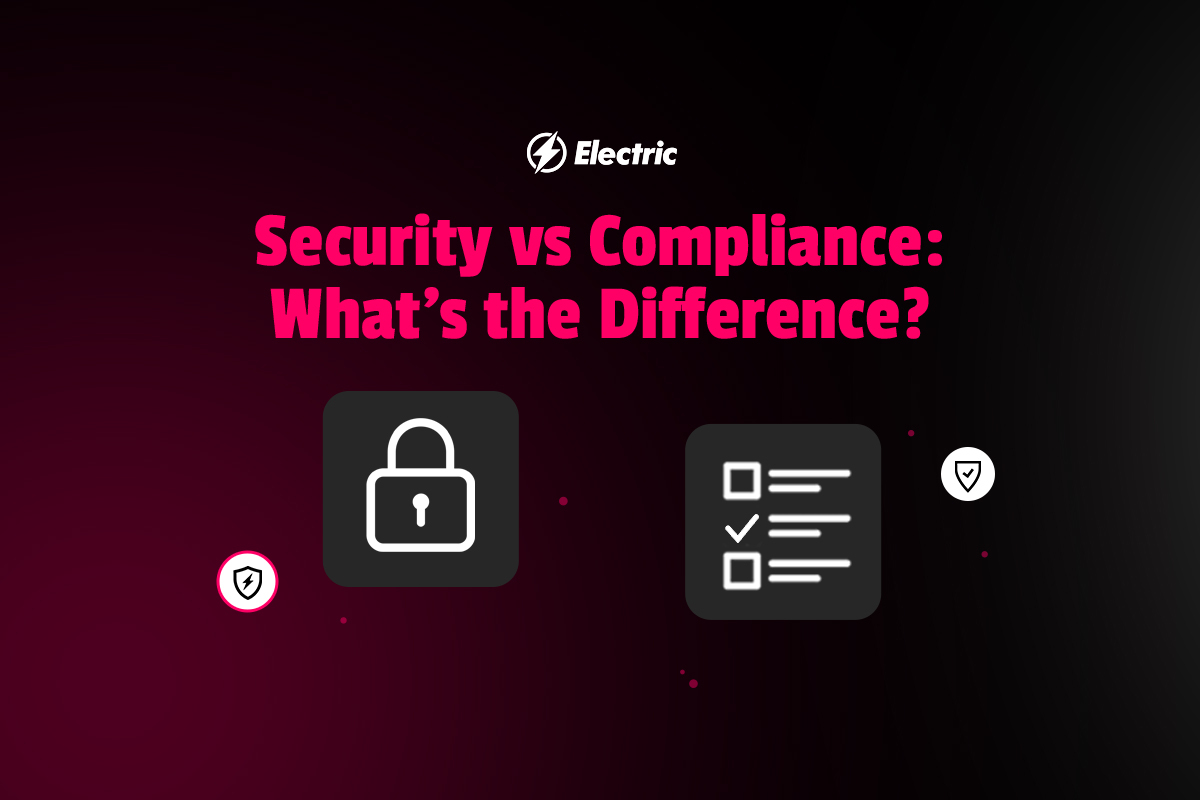
The past few years have been eye-opening for businesses across various industries regarding how important their cybersecurity needs are. Due to several high-level hacks and data breaches, together with the introduction of GDPR (in May 2018), businesses appreciate the essential nature of security more than ever before.
That said, the growing awareness has evoked a lot of debate about the importance of being compliant with modern privacy and data protection standards (such as HIPAA and GDPR) and how it impacts security.
As you might have guessed by now, compliance and security are closely linked, and each should drive the other. Nonetheless, compliance is not security. In fact, you can be compliant but not secure. In this post, we’ll explain compliance vs. security and why both are important for your business. Let’s dive in.
What Is Security?
IT Security is driven by the need to protect an organization’s assets from constant breach threats. In essence, it is the entire unique system of processes, policies, and technical controls that determine how your organization processes, stores, consumes, and disseminates data such that it is effectively protected from cyber threats. In order to ensure that your physical and digital assets remain secure, you should continuously improve and maintain your security protocols, especially since cyber threats evolve every other day.
Aspects Covered by Security
Networks
Networks enable you to share data speedily over vast distances. This enhances their risk factor—network data breaches can cause serious damage to your business. For instance, data loss or destruction can open up your business to criminal liability, whereas a breach of personal information can taint your business’s image. You can prevent unauthorized access to your network by using content filtering software and firewalls.
Devices
Cyber attackers usually target a user’s personal devices that connect to the company system. They use them as conduits for injecting unknown codes into the system. Alternatively, they can use malicious email attachments to spread the malware. You can stop attackers from accessing your devices by using endpoint scanning tools and antivirus.
Users
According to a recent report, 88% of data breaches result from human error. In most cases, employees won’t know that they have been breached or that they are enabling the attack. You can build up cybersecurity defenses by training your employees on how to detect cybersecurity threats.
What Is Compliance?
Compliance is the act of meeting the set security and regulatory standards. It demonstrates that you meet the minimum security requirements mandated by regulatory standards such as HIPAA, GDPR, PCI, and SOX.
As opposed to security that is driven by technical needs, compliance is driven by business needs and is usually practiced to facilitate smooth running of business operations and to satisfy external regulatory requirements.
Security vs. Compliance

Compliance involves applying regulatory standards to meet contractual or third-party regulatory requirements, whereas, security constitutes the implementation of adequate technical controls to protect digital assets from cyber threats.
Being compliant with a specific set of standards is not the same as having an effective and robust information security system. Compliance simply measures whether or not your security protocols meet a given set of one-size-fits-all security standards at a given point in time.
Conversely, IT security is unique to each organization—the measures set by one entity may be entirely different from those of another. Security focuses on comprehensively mitigating any risk that may threaten an organization’s data’s confidentiality, availability, and integrity—it relates to all the electronic and physical data of an organization and not just those covered by compliance.
Having a robust security system makes it easier for an organization to meet compliance standards, since most of the controls needed will already be in place. All that would be remaining to attain compliance would be documentation work and adhering to industry-specific policies.
An Example That Shows That Compliance Doesn’t Guarantee Security
To examine why compliance does not guarantee security, we’ll look at the December 2013 Target cybersecurity breach.
The Target breach resulted in the exposure of more than 40 million credit and debit card numbers. Whereas the complete details of this attack are unclear, the most likely scenario is that the cyber attackers retrieved VPN credentials via a phishing attack on a third-party contractor. This enabled them to access Target’s network remotely. Once they had access, the hackers installed malware on Target’s system, thereby revealing sensitive credit card data used at Target stores’ cash registers.
Given that Target processes hundreds of millions of credit card transactions every year, they have a legal obligation to comply with PCI DSS (Payment Card Industry Data Security Standard), which has controls such as network segmentation rules and password requirements that should have thwarted the attack. In fact, Target had just passed the compliance test, yet the hackers were still able to breach its systems just weeks after the test.
So how can that be? It is possible for sensitive data to be revealed or for a breach to occur even when an organization meets the compliance standards. That said, a robust security protocol can rectify the shortcomings of compliance standards.
Are Security and Compliance Equally Important?
Security and compliance are equally important but for varying reasons. Whereas security drivers are related to mitigating business risks, compliance drivers are regulatory/legal. Compliance and security have similar objectives around managing risks and securing sensitive data. Both of them deal with controls that are meant to reduce risks. Whereas a team tasked with securing information may not focus on compliance requirements (policies or documentation) related to information security, both compliance and security are essential business requisites that should be met.
Finding a Balance Between Compliance and Security
While compliance and security are different, both are crucial for controlling, processing, and managing sensitive data. As such, you must understand your business needs for compliance and security.
You can find a balance between your compliance and security by incorporating both of them into your business operations. You should also ensure that regular risk management, reviews, and audits are part of your internal processes.
Do You Need Help Enhancing the Security of Your Systems?
While you may be compliant and think you have the right security protocols in place, the right IT team can help ensure you don’t fall victim to cyberattacks and other cybersecurity breaches.
Electric is here to support your organization. Electric can work closely to help you push security policies and configurations that adhere to industry best practices across your entire company to help prevent a data breach.
Our commitment to architecting IT infrastructure security starts at the core of your business. That’s why we unify security at the device, application, and network levels.



